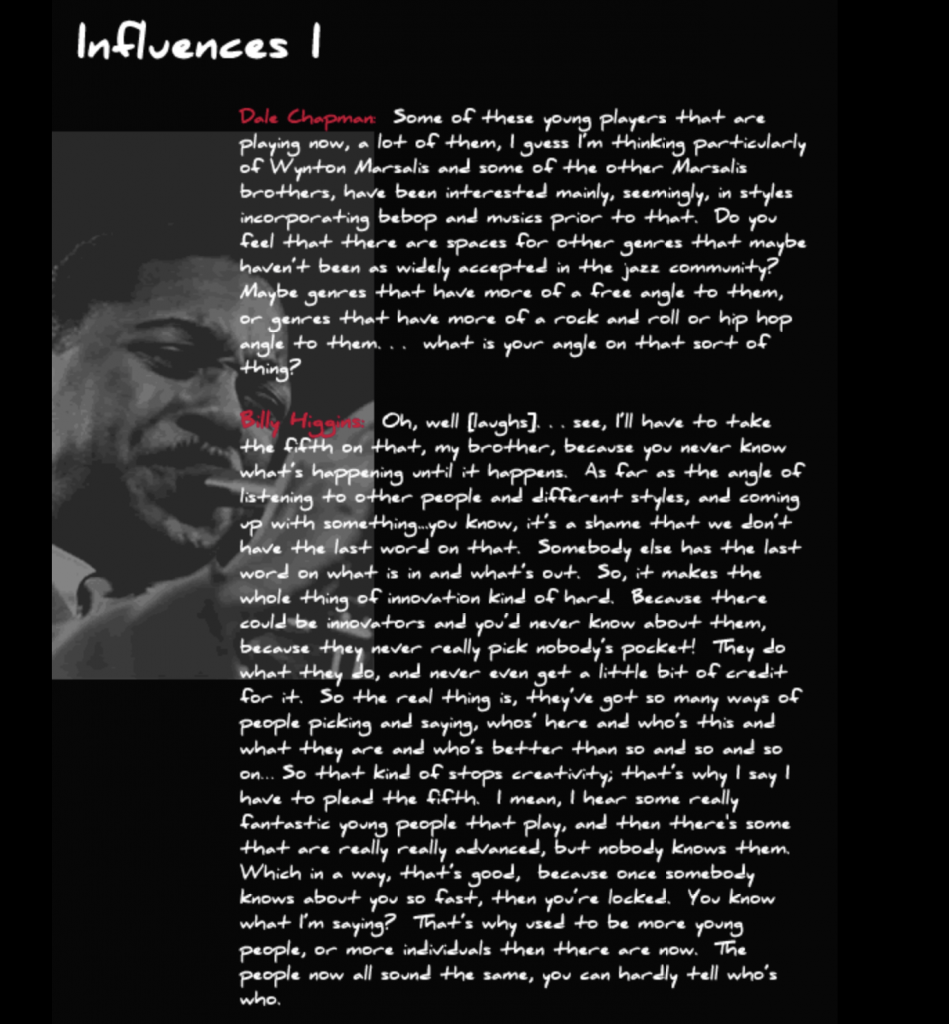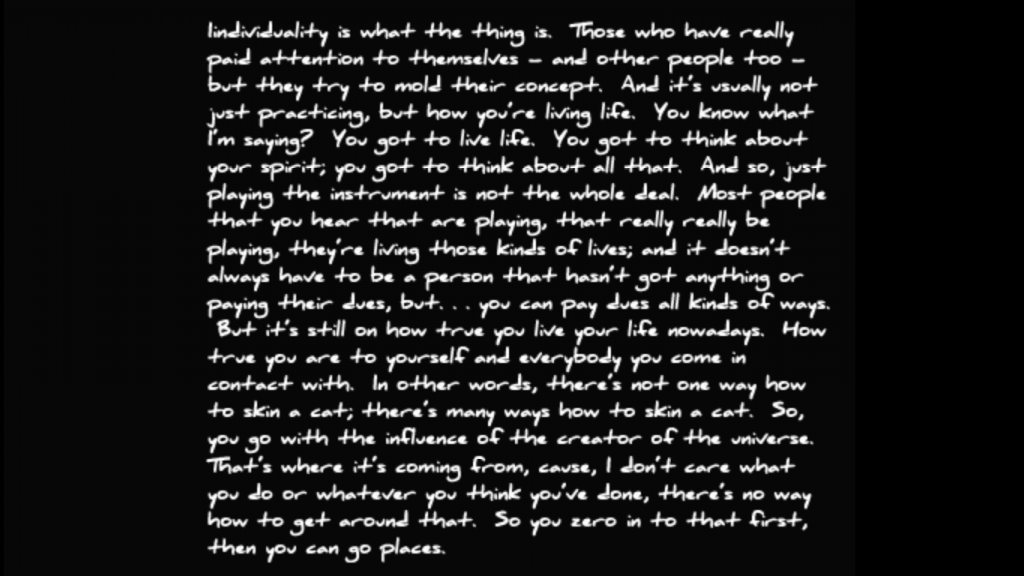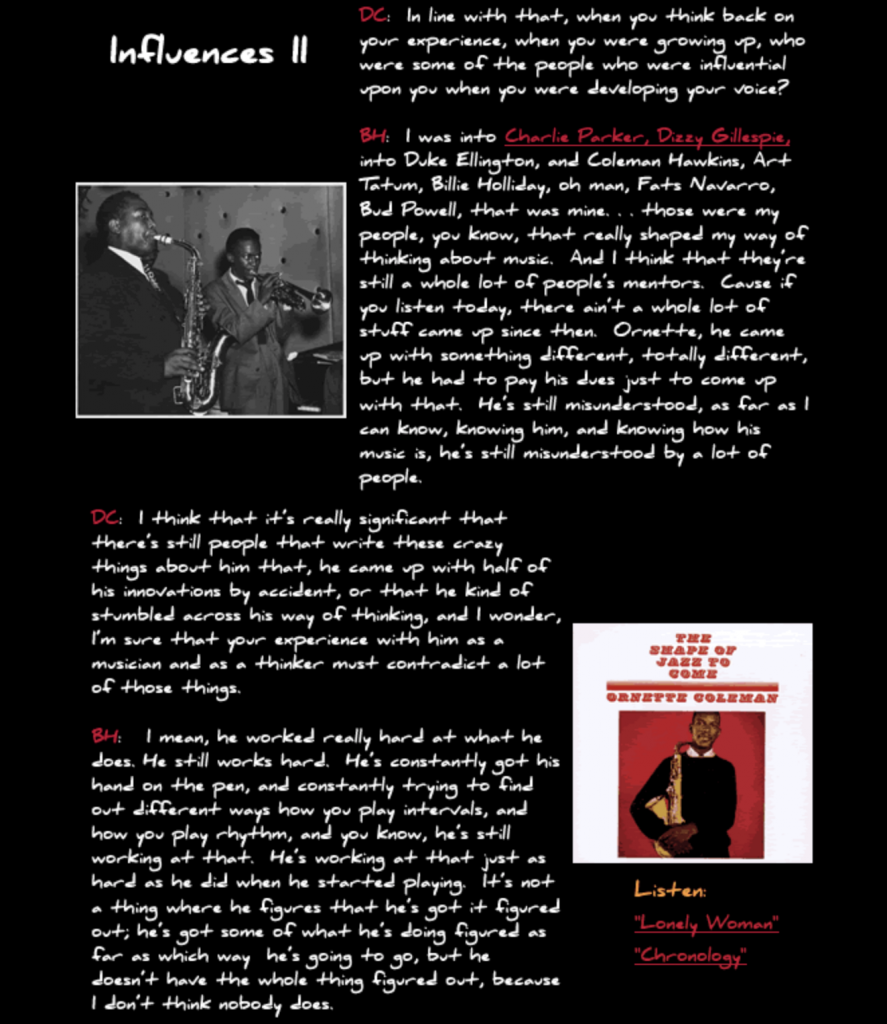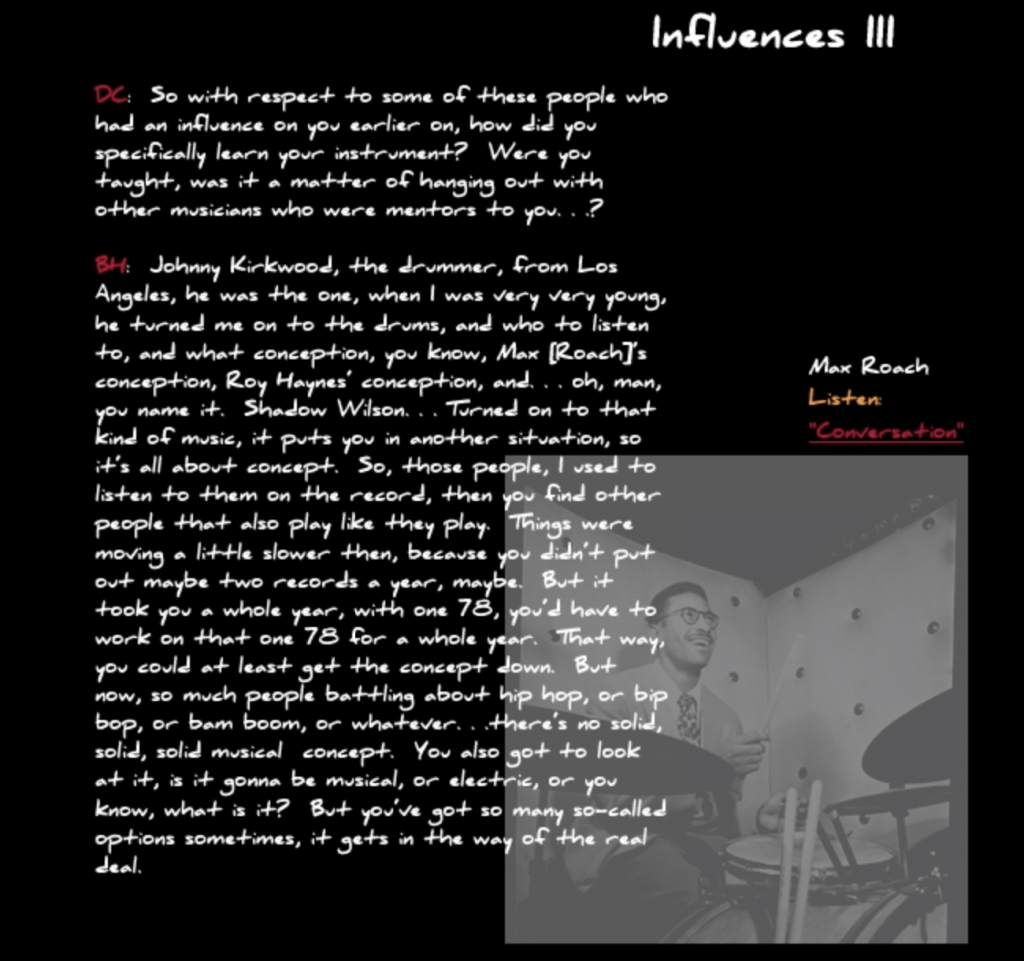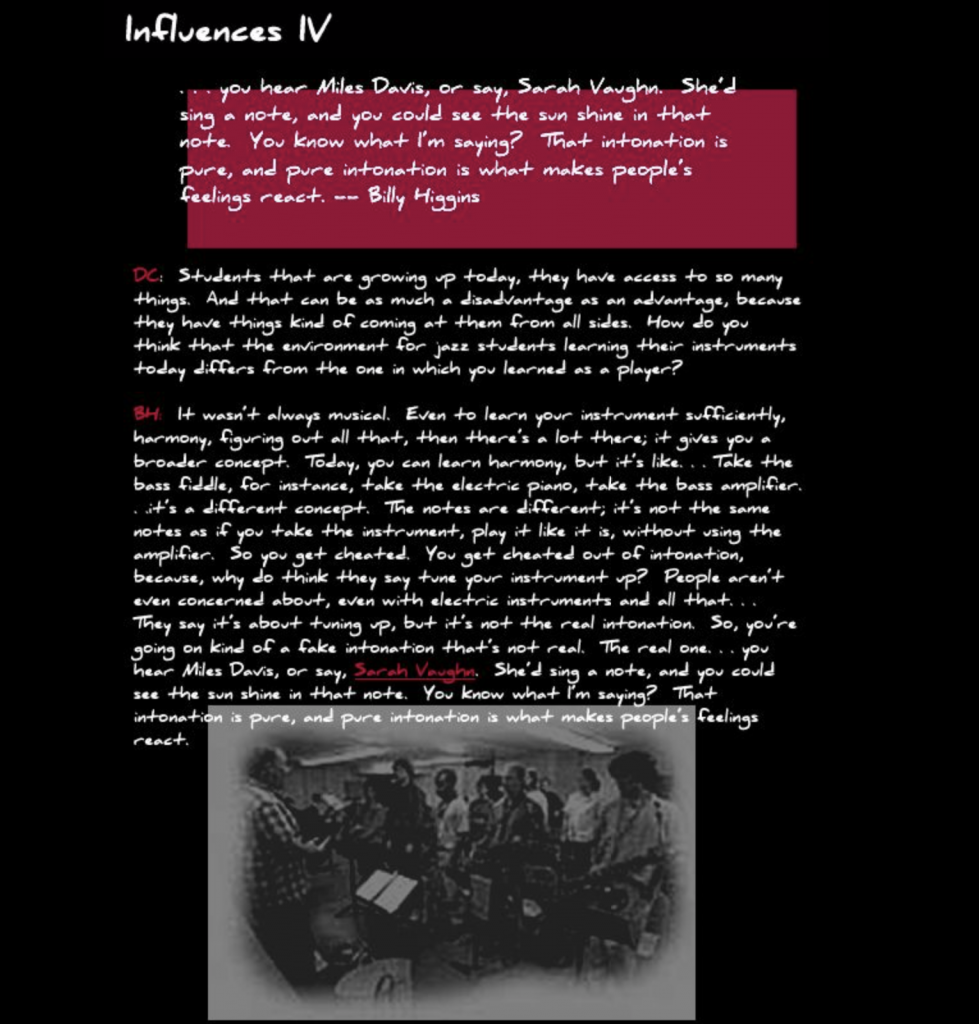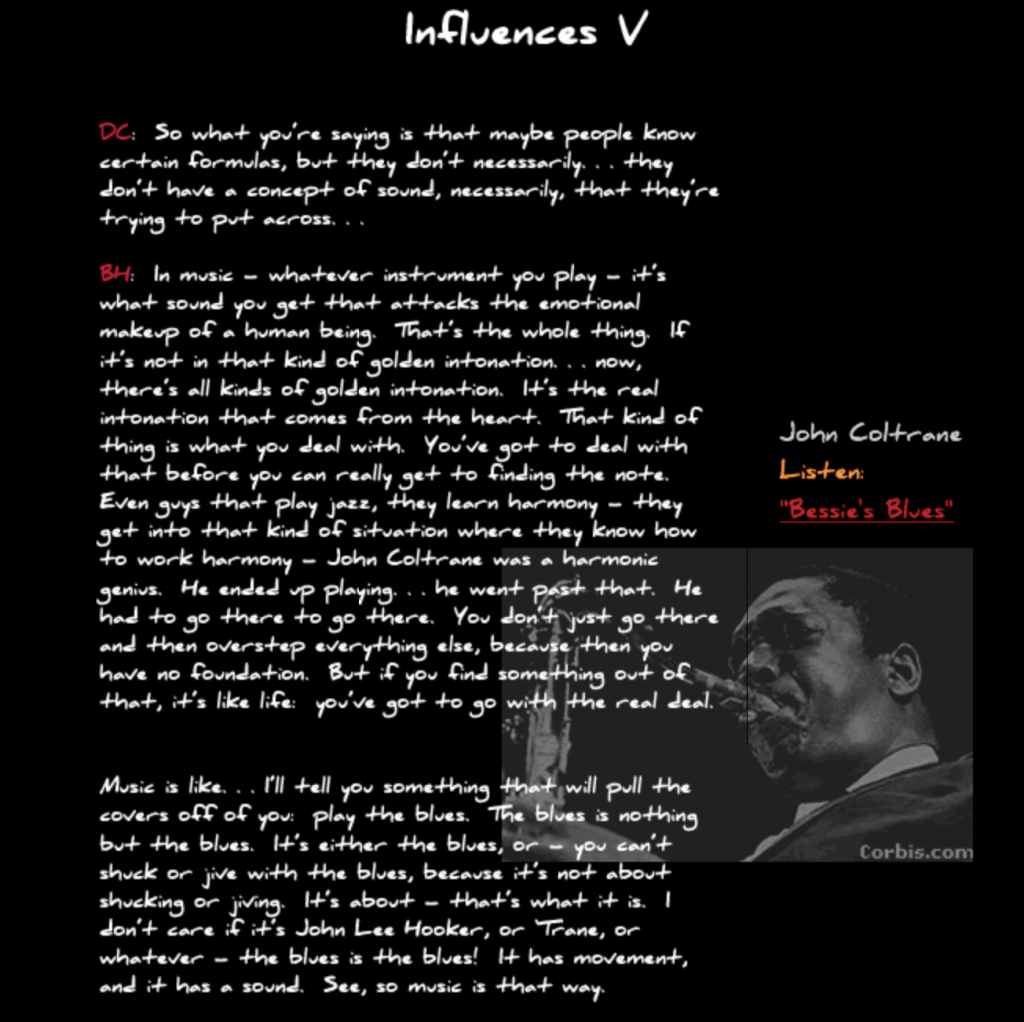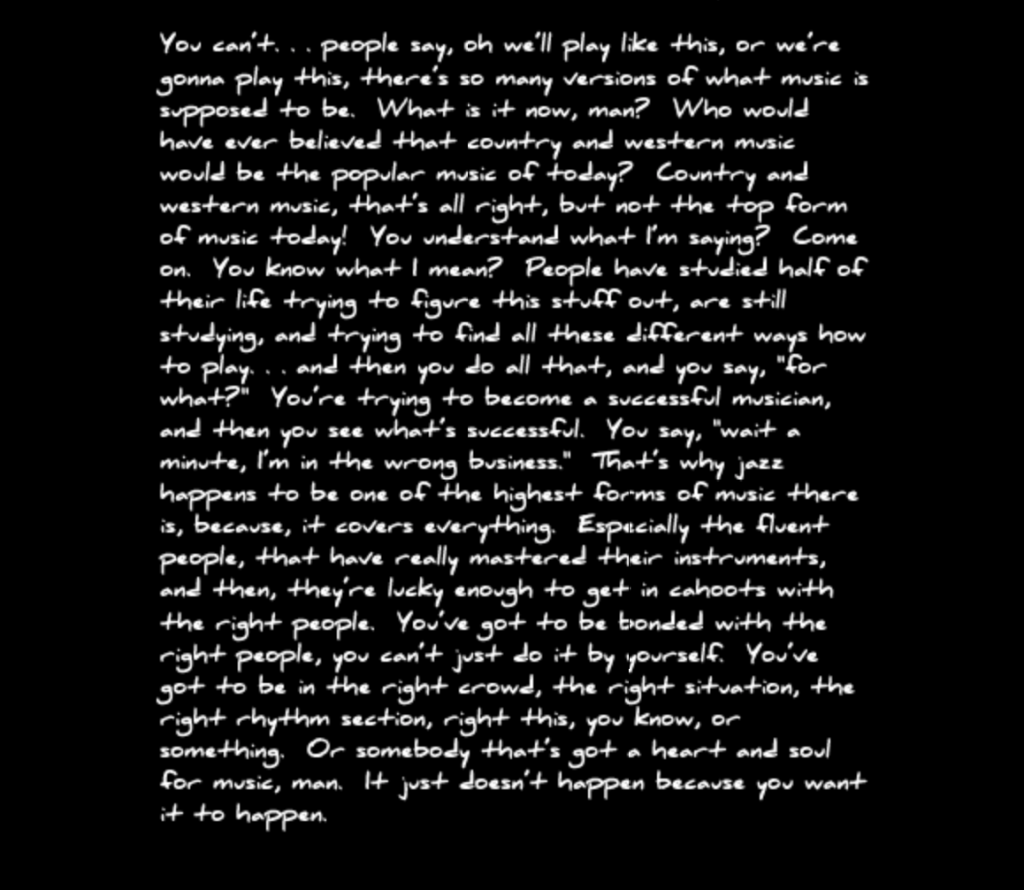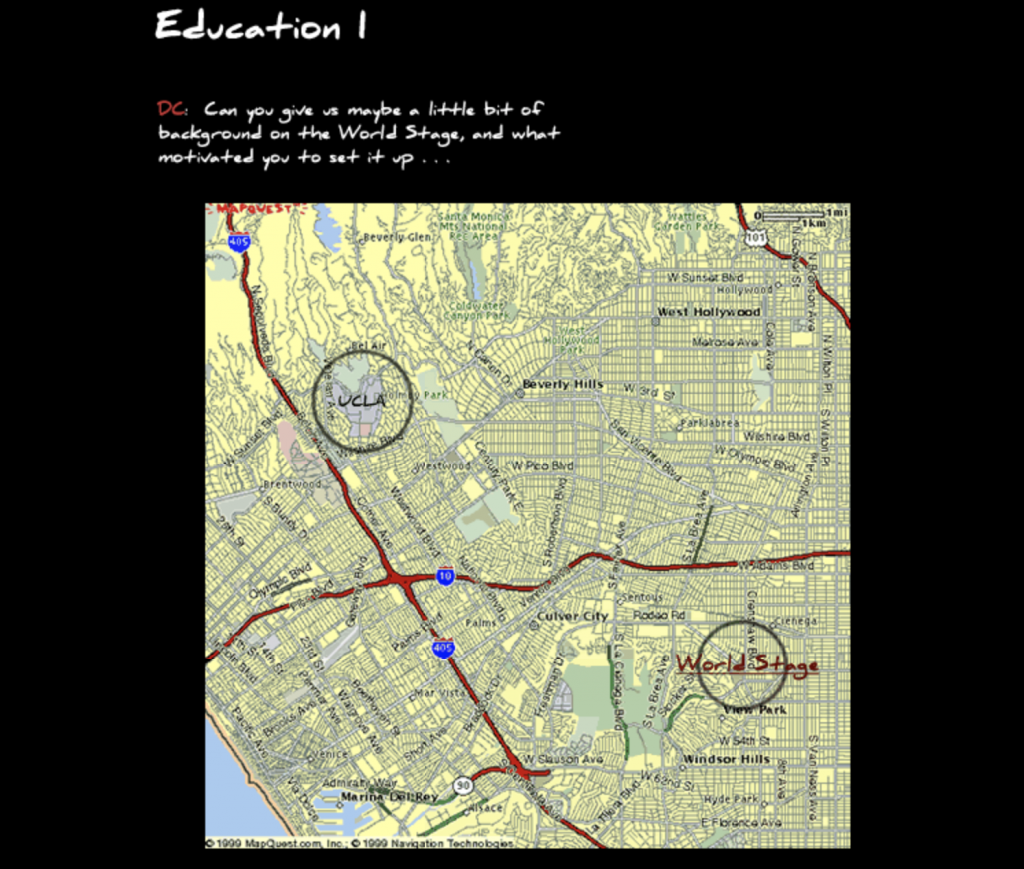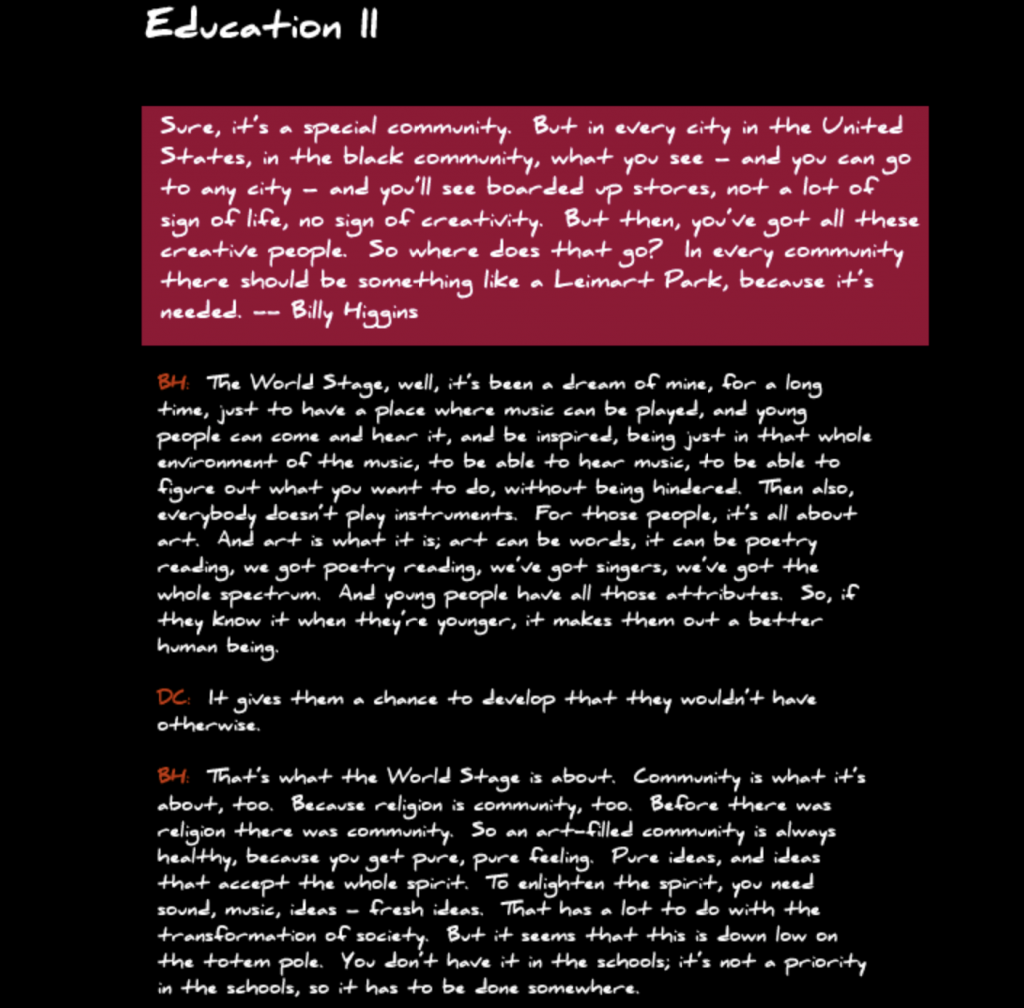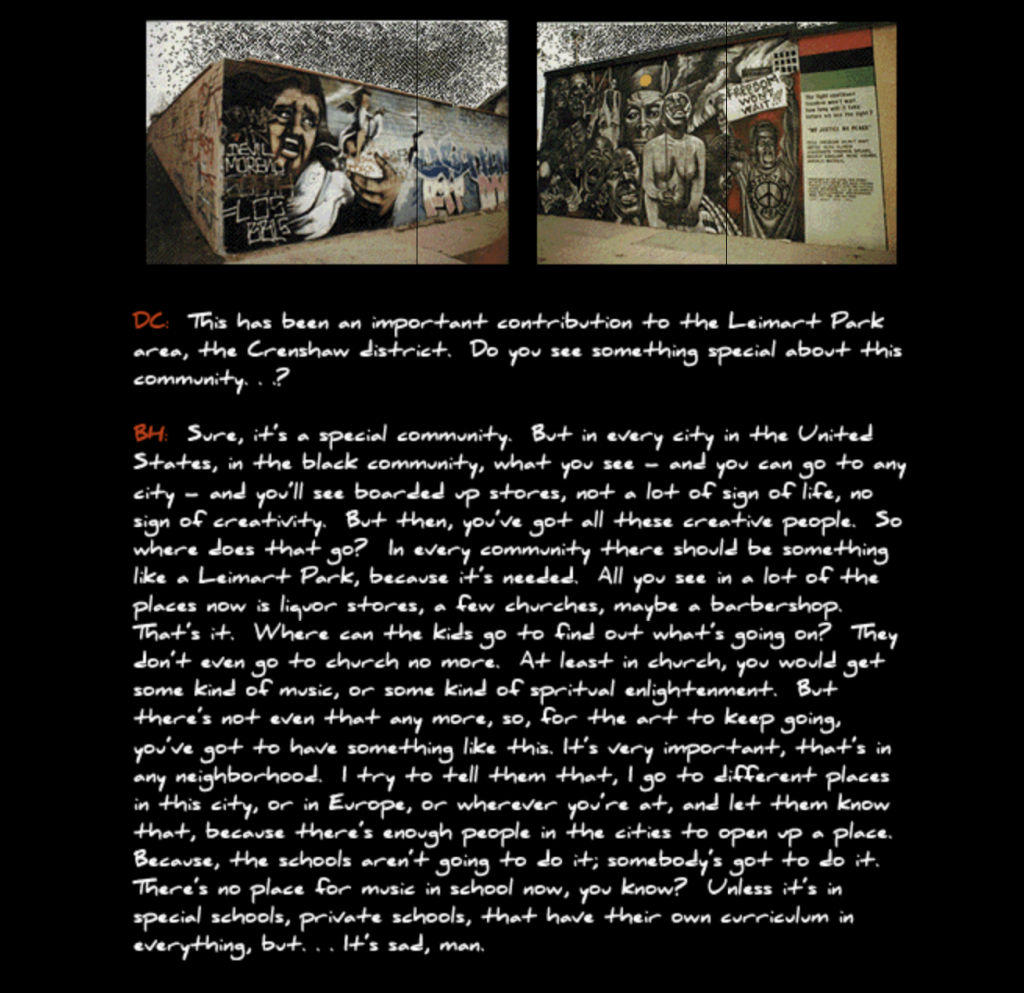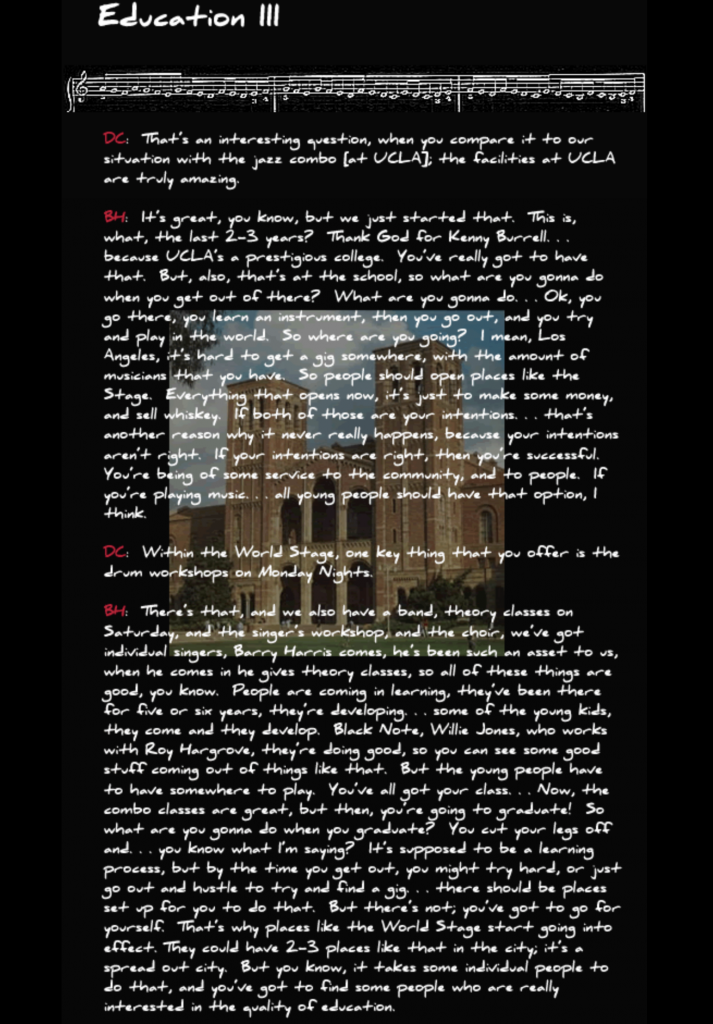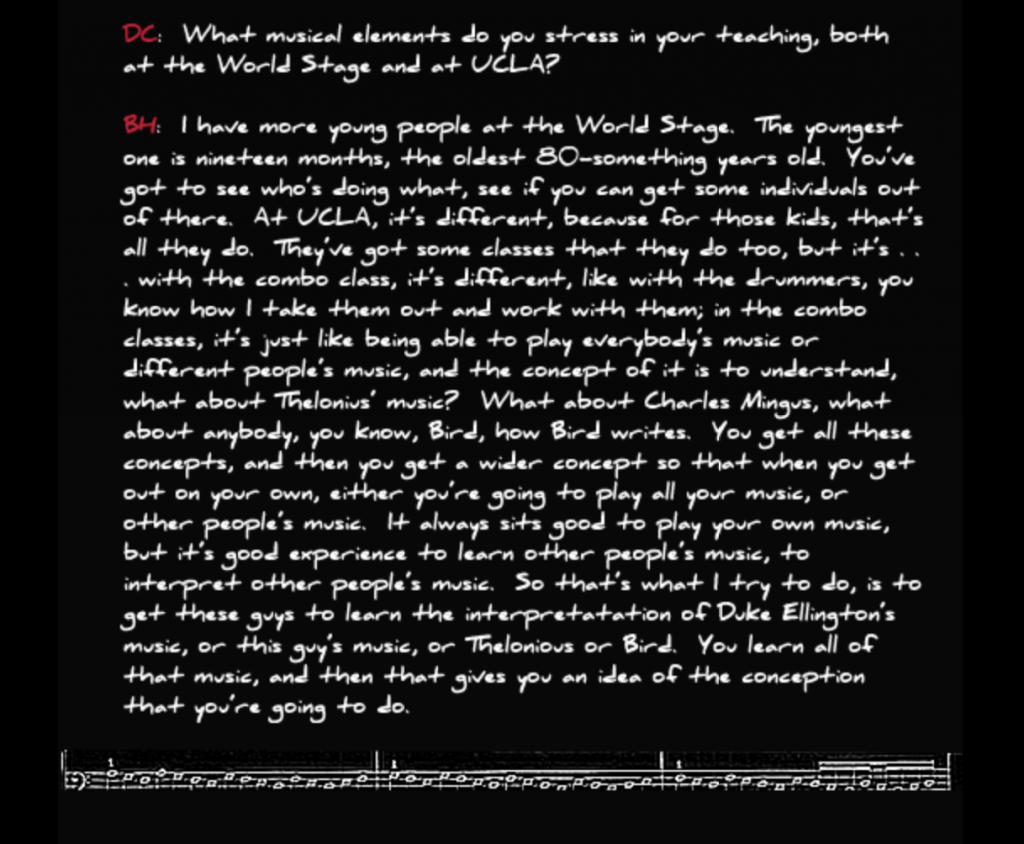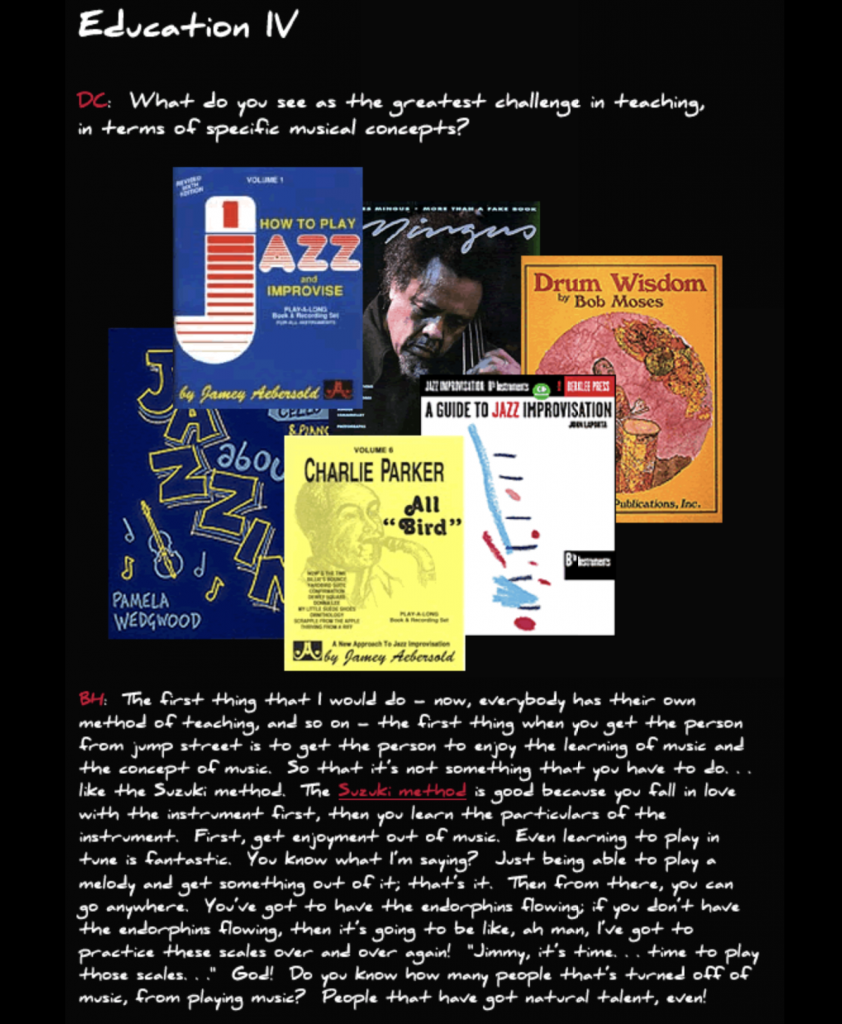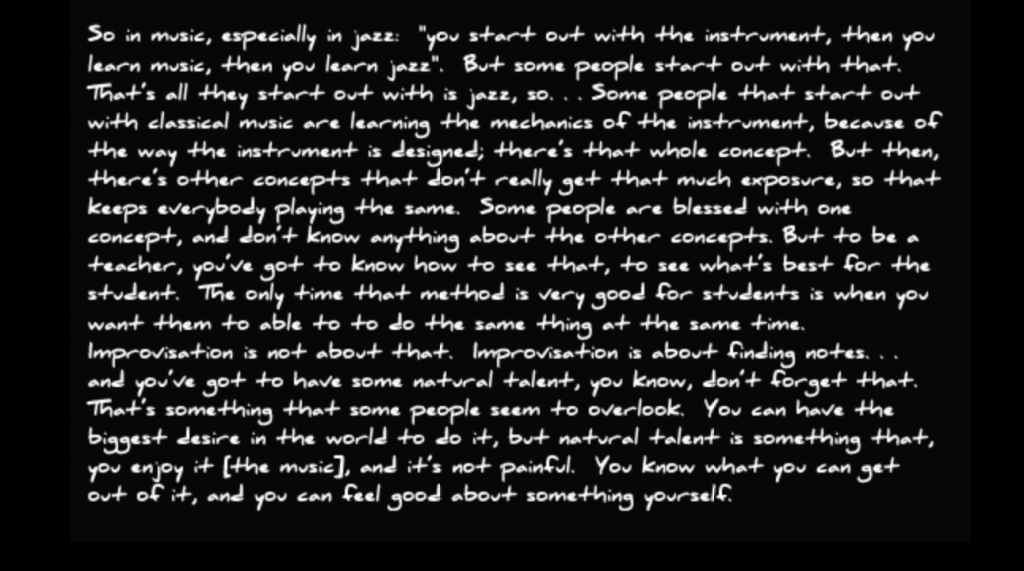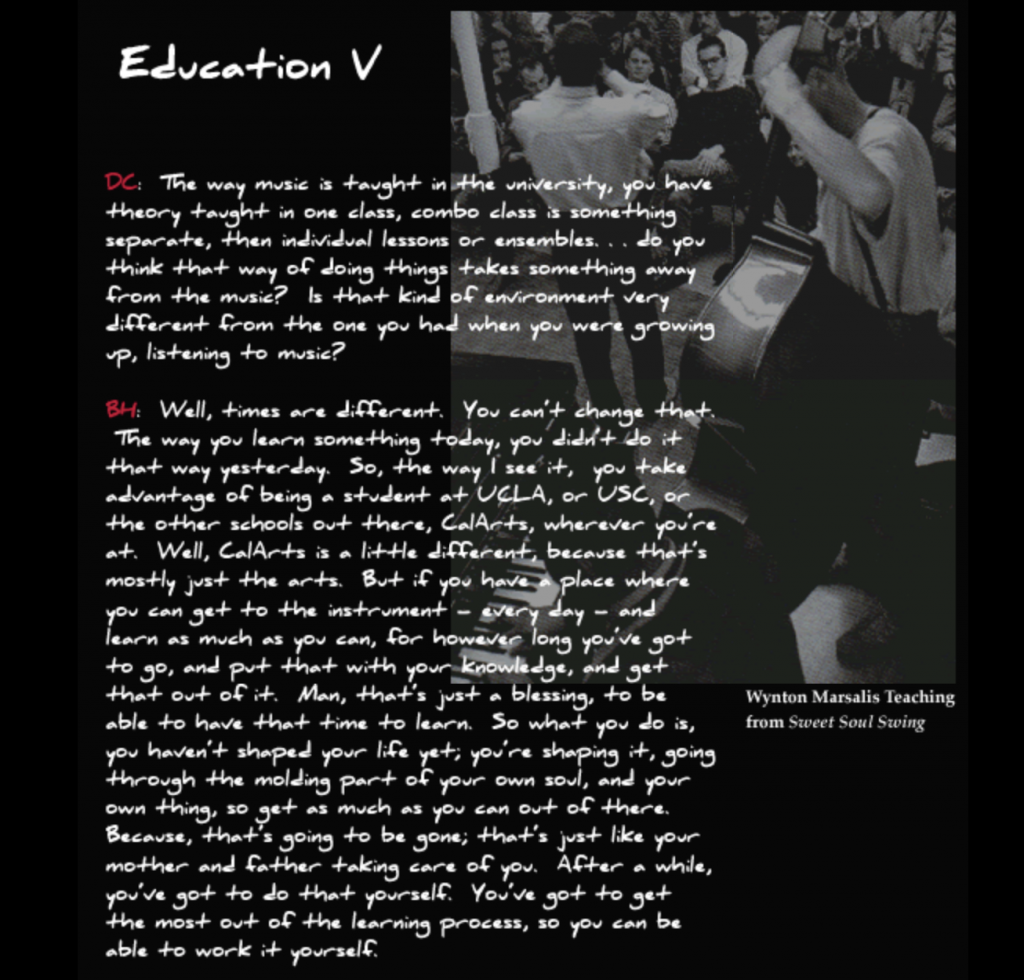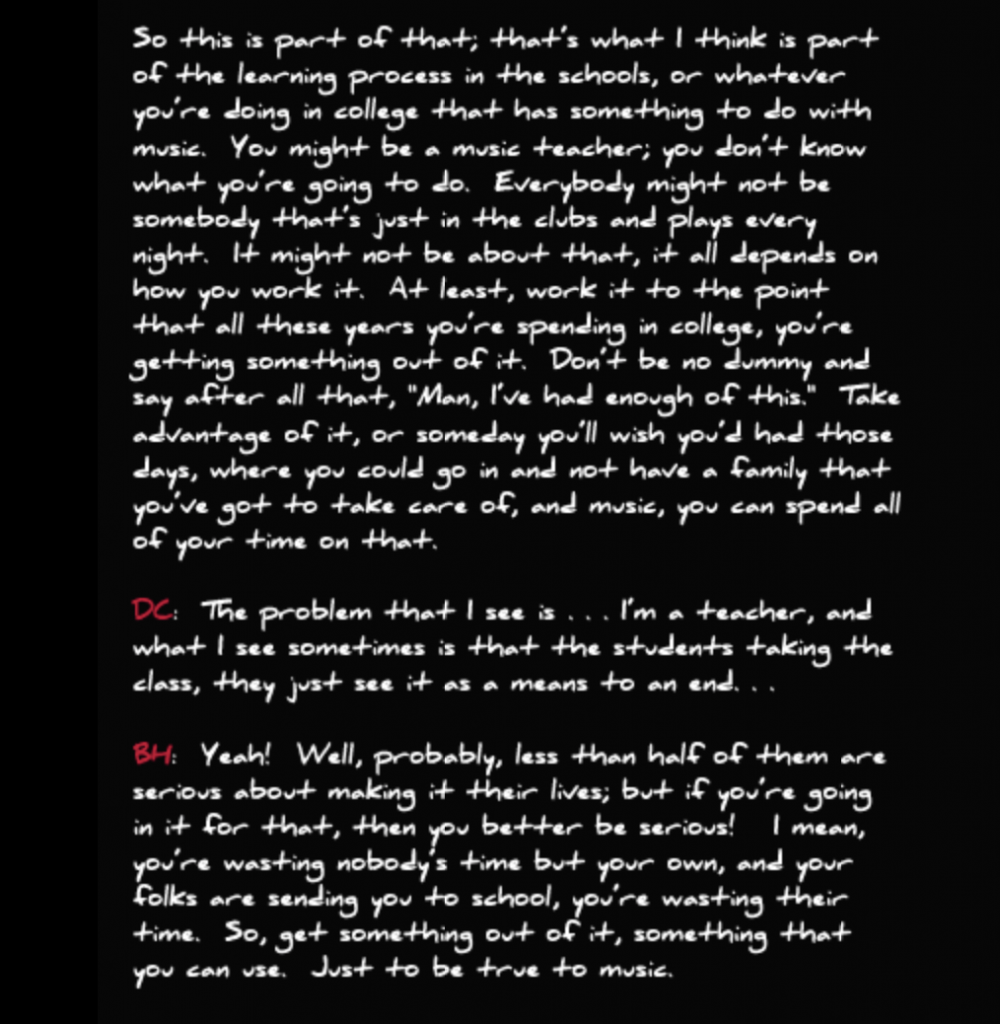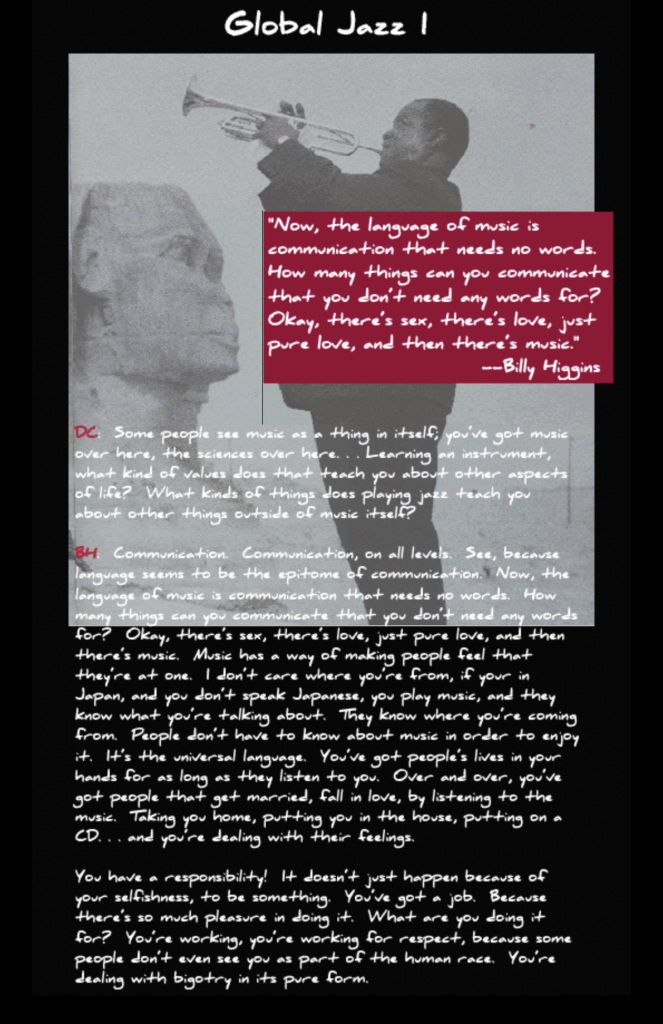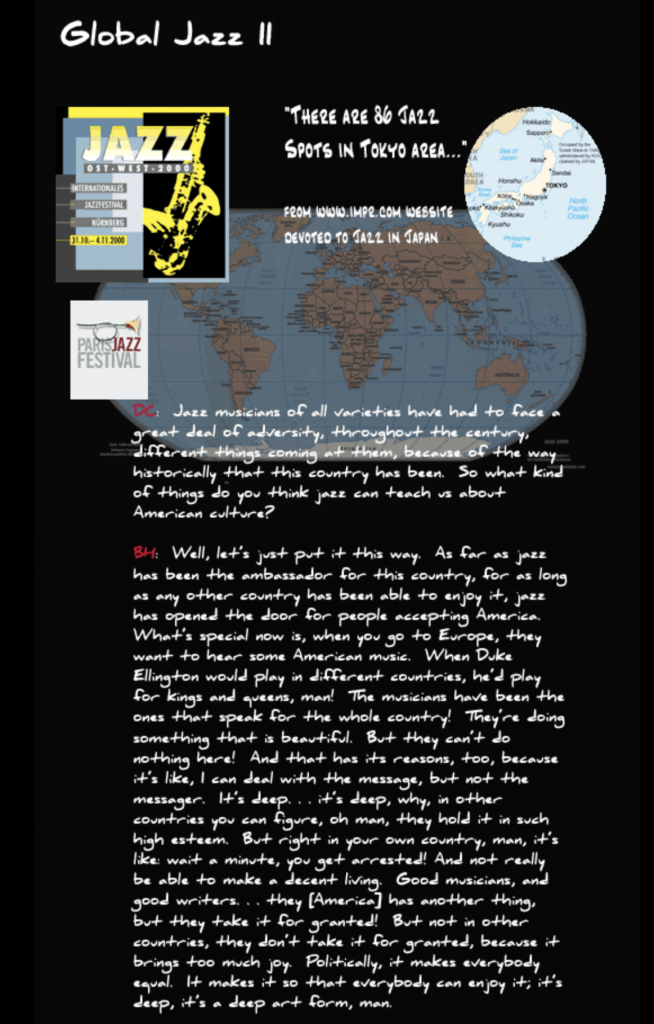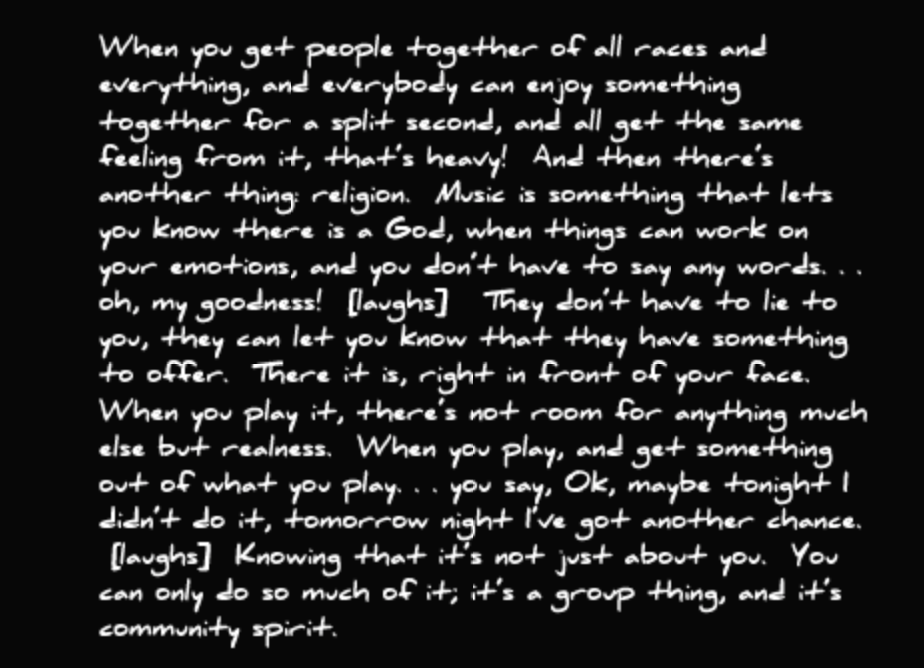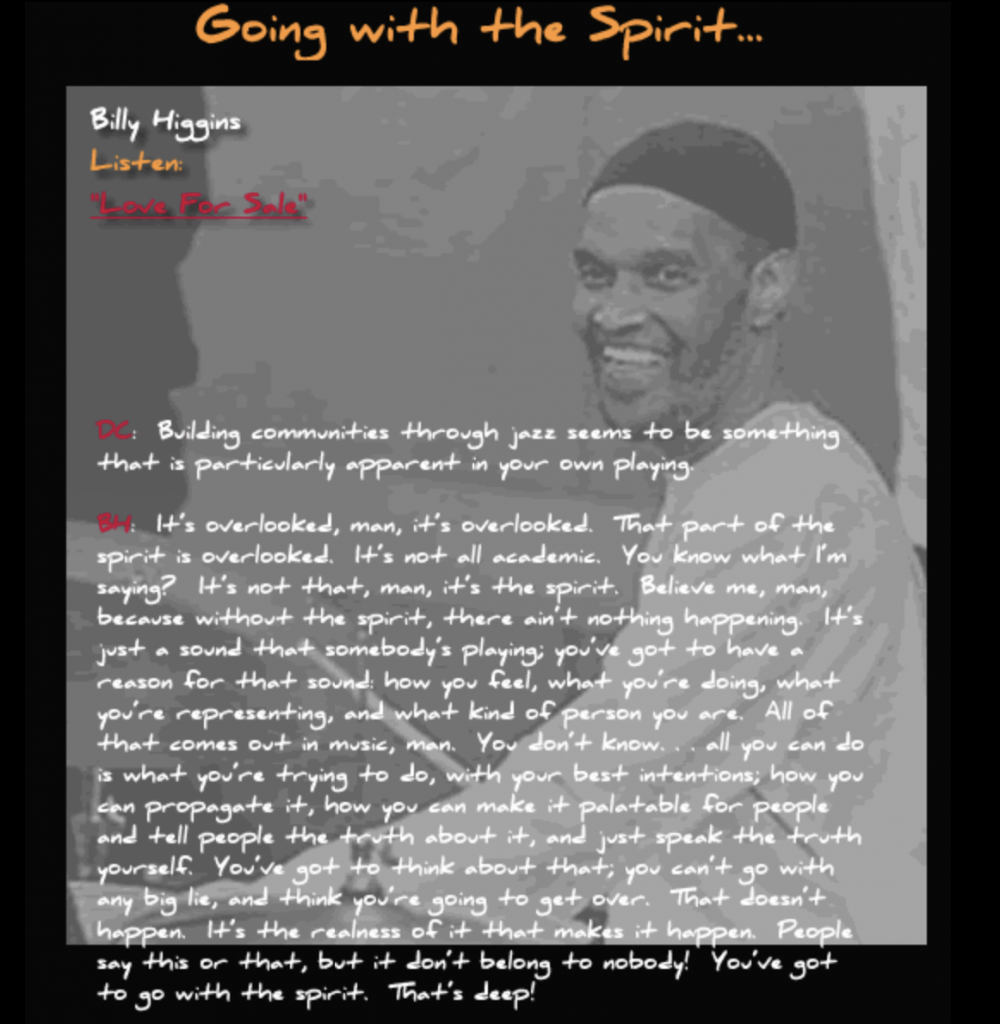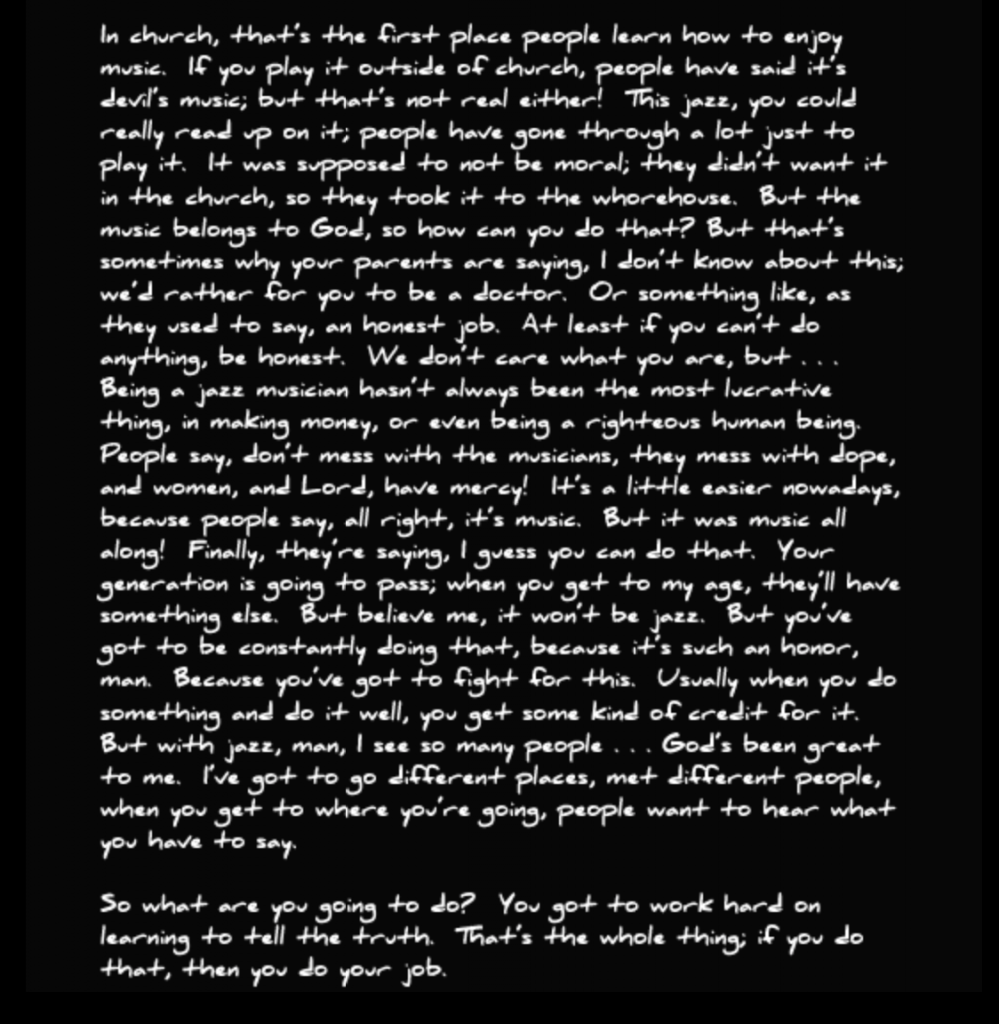Introduction
This May Dale Chapman and I travelled south of Interstate 10 to visit the World Stage, a legendary jazz drummer Billy Higgins’ jazz performance and educational space. Located in the Crenshaw District, home to a renowned African-American arts community, the World Stage hosts concerts, conducts educational workshops, and provides a venue for informal jam sessions. The World Stage is a cozy room with a small stage and seating for about 30 people, situated in an inconspicuous commercial strip on Degnan Boulevard. Decoration is minimal—images of Charlie Parker, John Coltrane and Miles Davis hang on the walls—and there is no bar. Nothing distracts from the purpose of the space: the study and performance of jazz.
Monday nights are devoted to Billy Higgins’ specialty—the drums. Park workshop, part jam session, the evening is split into two: early evening for children, later for children and adults. Arriving around 7:30, Dale and I, along with an excited group of children and their parents, spent several hours drumming. (Unfortunately, Higgins was unable to make this particular Monday night gathering.) For many of the children this was their first visit to the World Stage. After each child experimented solo, the drumset was split up, additional sticks distributed, and the evening transformed into an impromptu lesson and jam session.
In many American communities, particularly urban areas, money for the arts is scarce and getting scarcer. For many of these children, Monday night workshops at the World Stage present a rare opportunity to play on instruments and receive free musical instruction. The World Stage, though, provides much more than musical instruction—it teaches a new generation about African-American life, laying the foundation for a culturally and historically informed generation of adults.
I first became deeply involved in listening to and playing jazz in high school. Like many young and aspiring jazz musicians today, I had two sources of musical education: my private music teachers and my small but rapidly growing collection of jazz recordings. Billy Higgins, along with the other titans of jazz drumming—Kenny Clarke, Max Roach, Philly Joe Jones, Tony Williams, Elvin Jones (et al)—were my primary educational source materials. Over the years I can remember the following scenario repeating itself over and over: “That’s a great recording. I’ve never heard that before…who IS that drummer?” The answer was invariably Billy Higgins. Few jazz players rival Higgins’ all-encompassing vision of music making—his impeccable sense of time and his sensitive, propulsive accompaniment continues to be an inspiration for my own playing.
Billy Higgins is undoubtedly one of the most recorded drummers in jazz history. Even more impressive than his lengthy discography is Higgins’ presence on so many watershed recordings. A member of saxophonist Ornette Coleman’s earliest quartets, Higgins played on several of Coleman’s most important albums, including The Shape of Jazz to Come(1959) and Free Jazz(1961). On The Sidewinder(1963), Higgins, along with trumpeter and leader Lee Morgan, helped usher in what some critics have called “soul jazz”—a fusion of the bebop musical language with blues and gospel. Although sidelined in the early nineties due to illness, Higgins has returned to his incredibly active performing and teaching life. In addition to his appearance on new recordings, most recently on Jackie Mclean’s “Nature Boy” (2000), Higgins also teaches part time at UCLA, instructing one of the school’s small jazz combos.
Dale Chapman, a graduate student in musicology at UCLA and a member of Higgins’ combo, interviewed the jazz musician and educator soon after our visit to the World Stage. Passionate, candid, and often very opinionated, Higgins provides an invaluable perspective on the state of jazz and jazz education. What exactly jazz is and where it is going have been subjects of ongoing debate since the term was first applied to this unique, American hybrid musical genre in the early years of the 20thcentury. Notable jazz artists such as Wynton Marsalis, Billy Taylor, Herbie Hancock, and John Zorn—despite all sharing the title “jazz musician”—have, over the years, defined this music in radically different ways. In this interview we present another voice in this important cultural debate. Jazz is more than music—it is a cultural force that represents the complexities of life in America today. With his commitment to music and the larger community, Higgins is more than a famous jazz drummer.
Andrew Berish
